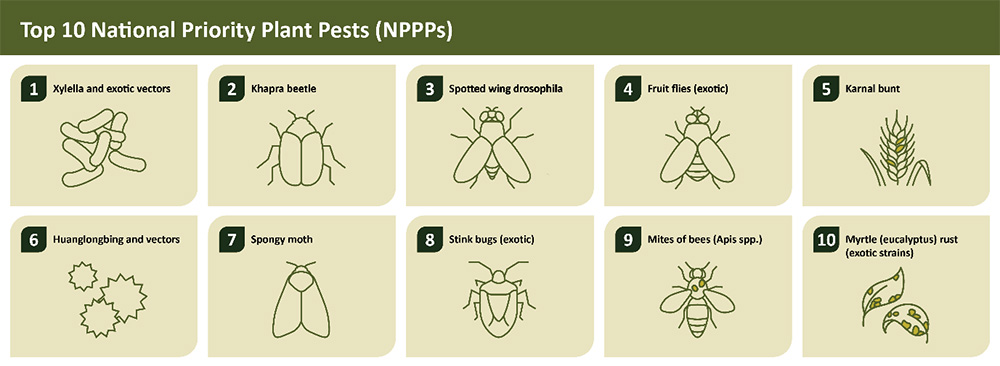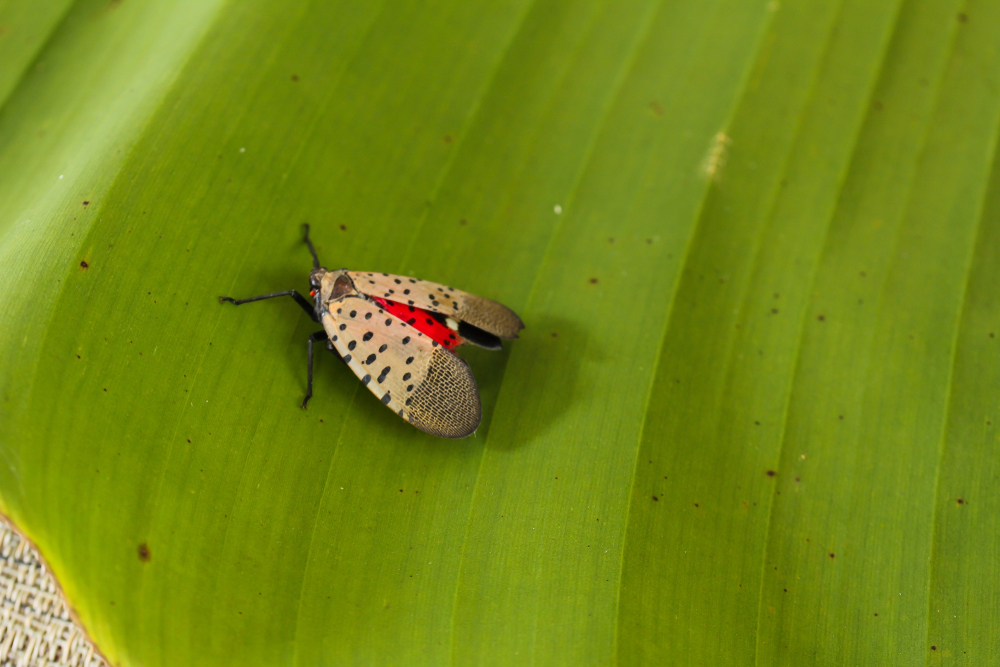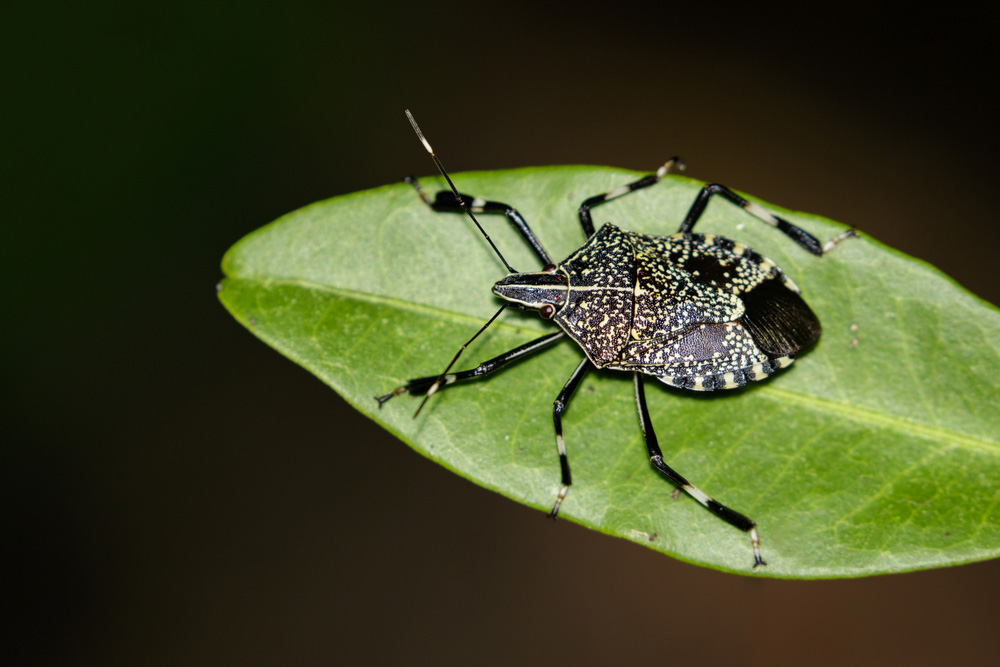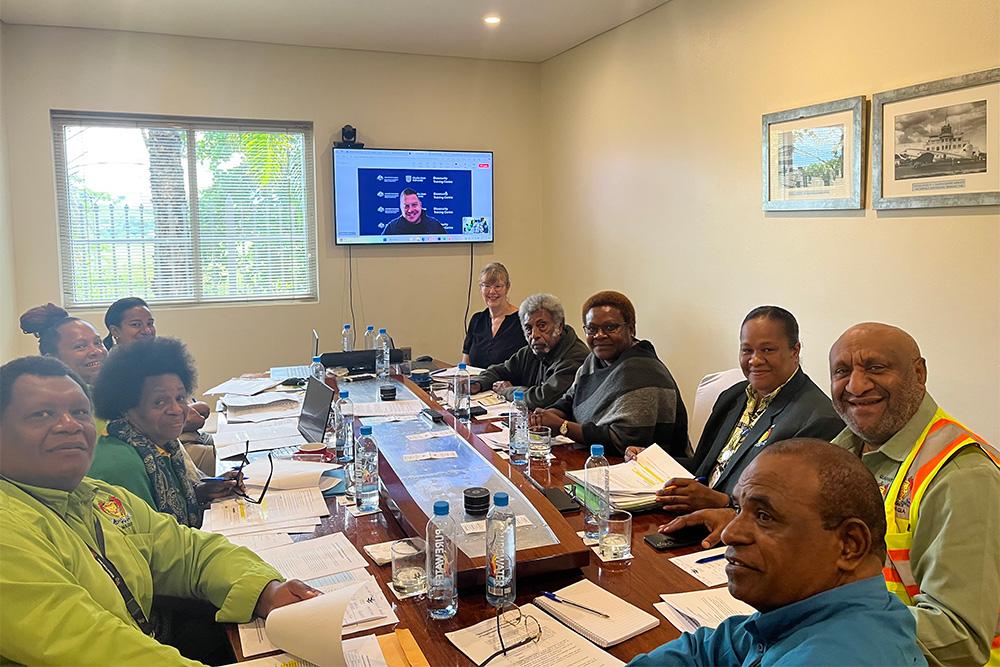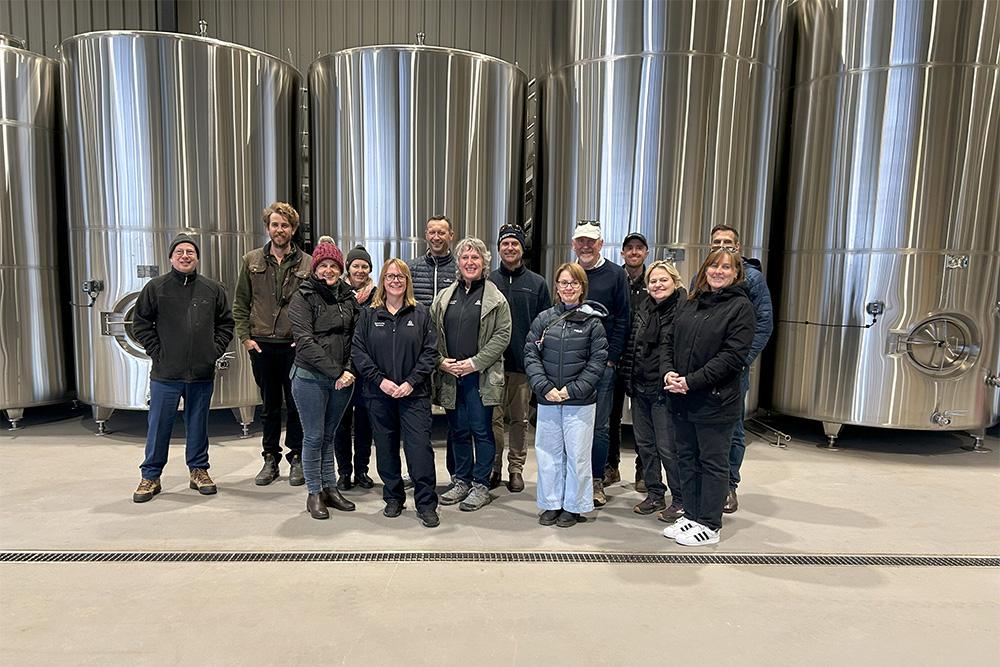Australia is fortunate to be free from many of the world’s most damaging plant pests and diseases that could severely impact our natural environment and agricultural industries.
In early December 2024, the department, in collaboration with state and territory governments through the Plant Health Committee, updated the list of National Priority Plant Pests (NPPP). The NPPP highlight the threats Australia faces from plant pests and diseases and guides national action and investment of public funds to address these threats. It includes 116 pests and diseases grouped into 37 groups based on shared biology, entry pathways, surveillance methods and response, or interrelated impacts.
The updated National Priority Plant Pests posing the greatest threats to Australian agriculture are now numbered from 1, being most significant, to 10. All other pests on the list are nationally significant and are listed in alphabetical order, as published on the National Priority Plant Pests page. This approach was chosen to avoid discrepancies in the rankings where it can be difficult to justify the order. The top three National Priority Plant Pests remain as the: 1) Xylella genus of bacteria and the vectors (insects) that carry it; 2) khapra beetle; and 3) spotted wing drosophila.
The bacterial disease Xylella causes scorched leaves, browning and loss of leaves, stunted shoots, reduced fruit size, dieback and death of many types of plants. It could be brought into Australia via the importation of infected plants or plant material and could then spread locally via a range of insect vectors which are also listed. One example being the meadow spittle bug (Philaenus spumarius) which is also included in Xylella NPPP pest grouping and not present in Australia.
The tiny khapra beetle (Trogoderma granarium) infests stored produce such as grain shipments or silos, eating the produce and making it inedible. The beetle could spread via infested shipments of imported grain and other foodstuffs, personal effects, machinery, straw, or as a hitchhiker in other cargo or in the shipping containers themselves.
Spotted wing drosophila (Drosophila suzukii) is a tiny fruit fly of a few millimetres in size that attacks a range of soft-skinned fruit such as berries, cherries, summerfruit and grapes. It also attacks apples, pears and other fruit with thicker skins once fruit begins to rot. It reduces crop yield and quality through direct feeding damage and secondary infection of the fruit. The fly species could enter Australia via importation of larvae-infested plant material, primarily fruit, and could then spread locally over short-distances by adult flies.
Actions to improve the way Australia prepares, detects and responds to these pests are covered under national action plans.
There are four new additions to the updated NPPP: Blood disease and moko disease of bananas, caused by Ralstonia bacterium; the hitchhiker pests, spotted lantern fly (Lycorma delicatula); and the yellow-spotted stink bug (YSSB), (Erthesina fullo).
The review and essential updates to the NPPPs included 1) Removing plant pests which have entered the country since 2019 but are not under official control or under any eradication program. 2) Removing plant pests that now have a low risk of reaching Australian borders. 3) Consideration of NPPP also found on the National Priority List of Exotic Environmental Pests, Weeds and Diseases (EEPL) and assessing suitability for continued inclusion. 4) The taxonomy and/or common names of remaining plant pests have been updated.
Australia’s plant biosecurity faces increasing pressure from global trade, travel, and climate change. A proactive and collaborative approach to reviewing and updating the NPPP every five years is required to ensure currency.
